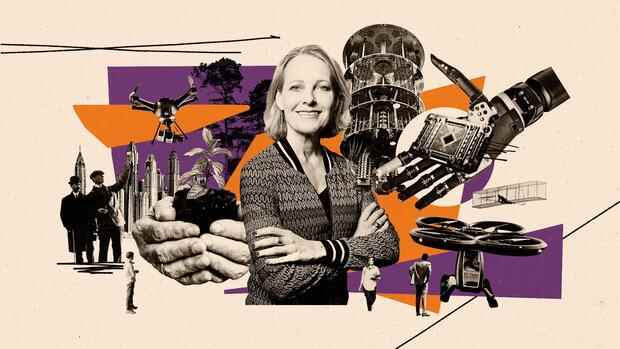When Jeremy Bentham had the idea of the Panopticon in 1791, he drew a circular building. Numerous lighted rooms, cells or offices were planned in its outer circle. Inside the rotunda was an observation tower from which a guard has a perfect view of everyone else in the building but remains in the dark himself.
The British philosopher and utility ethicist Bentham had created the perfect control architecture. Just the idea of being under constant surveillance should create a surveillance pressure on the people in the building that will discourage unwanted behavior.
You have to know that Bentham’s architectural surveillance fantasy was actually intended for the construction of factories. However, it was first built in 1811 for a different purpose – as a prison. Someone on the way to implementing this project must have realized that work and imprisonment are not the same.
There are other, more subtle forms of restriction of freedom that have shaped the course of the evolution of organized labor over the past 200 years. They too are involved in surveillance. This includes, for example, the “Scientific Management” of the US ergonomist Frederic Winslow Taylor. He had recognized that spatial limitations are not necessary to control people and put them under pressure. This can also be done with a stopwatch and measuring device.
Top jobs of the day
Find the best jobs now and
be notified by email.
Taylor broke down each work process into its smallest components, measured to the second how long a handle or movement took, and then assigned these fractal miniature works to the employees on the assembly lines. What Karl Marx would have horrified to see as the alienation of work, Taylor saw in this as the gain in efficiency of early industrial society.
Monitoring tools: Increased use since the pandemic
Fortunately, office or factory work today has nothing to do with imprisonment, and we have also developed civilization in the use of stopwatches and time clocks. Technology is used. And you have to take a closer look.
Since the pandemic, many American companies have been using software that deserves the name “Panopticon 4.0”. Of course, it’s not called that, but “Time Doctor”, “Hubstaff” or “WorkSmart”. But a prison is still a prison, even if it is called a 100% secure wellness hotel.
These modern monitoring tools run almost unnoticed on employees’ computers. They record keyboard activity, mouse movement, and screen scrolling, and take a screenshot or even a recording of the person in front of the screen every few minutes.
The motive is clear: they want to force employees to concentrate on their work and avoid unnecessary breaks and frequent distractions. You would also like to make sure that your colleagues are actually working and ideally for your own company. Comprehensive control replaces trust-based working hours.
Employee Monitoring: Software systems are extremely error-prone
In theory, some employees even agree. Such a system can help to concentrate and focus, and is also fair because only work actually done is paid for. And that’s where it gets absurd.
As the “New York Times” found out in a major investigation, most of these software systems are extremely error-prone or simply stupid. For example, if the system takes a photo every ten minutes and the person working has turned away from the screen at the very moment when the photo is taken, then this “work unit” is deducted – and not paid for either.
>> Read also: Facebook dropout Steenfatt: “I think internal surveillance has increased a lot”
Even senior executives are struggling with this new form of monitoring, only to find that their good salary is suddenly down to two-thirds as the software pulls everything that isn’t keyboard or mouse activity. Taking notes on paper in between, taking a walk with employees for a feedback session, yes, simply thinking to solve a complex problem – none of this counts as work and is not paid. Thinking for yourself can get really expensive in a work environment like this.
Fight technology with technology
Anyone who works with Microsoft Teams is familiar with the small green status indicator next to their own profile picture: After a few minutes of inactivity, it switches from green to yellow. A friend of mine works for a consulting company in Switzerland. She was regularly asked where she was when the light was yellow.
She’s doing it like so many others now, fighting technology with technology. Your solution to control hysteria is the Mouse Jiggler. This is software that simulates movements of the mouse and thus simulates activity on the computer. So you can at least go to the toilet without getting a call from the company.
The French philosopher Michel Foucault described the panopticon in his work “Crimes and Punishments” (1975) as a metaphor for the modern disciplinary society: the perfection of power in all-round surveillance makes its actual exercise superfluous. The other side of the coin is the perfect simulation of work: the software-controlled movement of the computer mouse makes actual activity superfluous. How you measure, so you are.
In this column, Miriam Meckel writes fortnightly about ideas, innovations and interpretations that make progress and a better life possible. Because what the caterpillar calls the end of the world, the rest of the world calls a butterfly. ada-magazin.com
More: After ruling on abortions: women in the USA fear surveillance by period trackers
